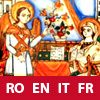The museum collection
The painting of icons on glass was spread throughout various regions of Transylvania – Nicula and its surrounding districts (southern Transylvania), the Mureş Valley, the region of Făgăraş, the region of Braşov, the Valley of Sebeş-Alba Iulia, Sibiu and its surroundings – each characterized by specific stylistic motifs. These regions are all well represented in the the Fr Zosim Oancea Museum where, among the almost 600 icons which make up the collection, are also several which come from the Bukovina and the Banat, as well as a few probably of Austrian origin. This brief account, which is intended to prepare the prospective visitor for the experience of the full collection at the museum in Sibiel, describes the icons according to their region of provenance.
● Nicula and northern Transylvania
The icons of Nicula and its surroundings, particularly the oldest icons, are immediately recognizable for their small format (about 20x30 cm.), the characteristic luminescence of the glass and their pigments - often pure (with a preponderance of white, black, ochre, dark brown, brick red, olive green, blue-grey and gold). The subject being represented has pride of place, without any location in an architectural context or landscape and with decorative motifs on the margins of the composition – most usually a border on three sides in the form of a rope, symbol of the two natures of Christ and of eternity. Characteristic of this district is the icon of the Heavenly Banquet, figuring a table of rhomboid shape at which are usually seated Mary, Jesus and two saints.
● The Mureş Valley
The icons painted in the Mureş Valley represent a unique blending of the Byzantine tradition typical of icons painted on wood and motifs associated with local traditions and customs. Among those present in the Zosim Oancea Museum, the icons of the Madonna with Child and of St Nicholas, both by Sandu Popa, are particularly worthy of attention: while the gold background, a certain monumentality in the representation of the subjects as well as the use of cyrillic lettering, recall the classical style of icons on wood.
● Făgăraş District
The painting of icons on glass reached its artistic peak in the district of Făgăraş and in the middle Olt Valley, supported by a great interest in folklore and popular art. The two major icon-on- glass -painters, Savu Moga and Matei Ţâmforea, came from this region as did famous families of painters such as the Moldavan, Grecu and Tămaş. The most prominent artistic personality is Savu Moga (1816-1899): his icon of the Annunciation in the museum at Sibiel is an excellent reflection of the quality and style of his painting which makes a wide and conscious use of different tones and a mixing of colours which lead to effects of an extraordinary refinement. A pupil of Moga’s, but with an artistic personality of his own, was Matei Ţâmforea (1836-1906), the second great icon-painter in the district of Făgăraş. Ţâmforea’s icons in the museum at Sibiel are characterized by great attention to detail, narrative verve and descriptive talent: among these, for example, are the icons representing St Elijah and the gospel story of Dives and Lazarus. Another frequent subject is the Last Judgement. The Făgăraş district, like some of the others, also produced some women icon-painters, the most noted of whom is Ana Tămaş, whose married name is Deji.The Fr Zosim Oancea Museum contains several of her works.

● Braşov District
In the district of the ancient village of Şchei, later to become part of the city of Braşov (Şcheii Braşovului), the painting of icons on glass quickly took on certain stylistic qualities of its own, reaching the peak of production in the second half of the nineteenth century. The works in the Zosim Oancea Museum are good examples of the characteristics of these icons - strong colours (red, orange, blue and white) and big dimensions of the frames. Very widespread in the Braşov district are icons of the Madonna with Child, in this case characterized by elements typical of local tradition and folklore, as in several of the icons at Sibiel: a collar of gold coins (salba) like those worn by women in the south of the country and earrings typical of women of the region.
● The Sebeş Valley - Alba Iulia
The icons of the Sebeş Valley are characterized by more sober colours and a less lively composition. The most significant centres of production were Laz and Lancrăm. Here, the influence of the Byzantine tradition typical of icons painted on wood is more marked and the use of silver-coloured paper was very widespread in this district or, in more precious icons, gold foil, subject however to gradual oxidization which resulted in progressive degradation of the pigments, leading finally to the predominance of verdigris.
● The localities around Sibiu
The villages of Sălişte, Vale and Poiana – villages around Sibiu, or more precisely, the so-called Mărginimea Sibiului – contained many icon-painters who, despite influences from other districts, developed a style of their own. One example is the painter Ion Morar (1815-1890): his Last Supper in the Sibiel Museum displays a marked baroque influence. Morar’s daughters, Emilia (1861-1931) and Elisabeta (1866-1939) continued his work but without matching his quality. Also widespread in this region is the so-called “Icon of The Feasts” (prăznicar), based on a central panel of one of the fundamental events of the life of Christ (mostly the Resurrection).
Collection of ancient books and handicrafts
In addition to icons on glass, the Zosim Oancea Museum also has important holdings of ancient books, among them a Slavonic liturgical text of the sixteenth century, the Belgrade New Testament, a rare copy of the Şerban Cantacuzino Bible etc. In addition the museum houses examples of local handicrafts such as ceramic vases, antique furniture, traditional domestic utensils, textiles embroidered with motifs from popular art etc. The ancient books shaped the spiritual ambience of the icons on glass while the other objects evoke the natural milieu in which the icon developed its role – the house of the Romanian peasant

TOP |
 |
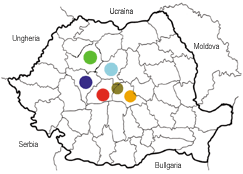 
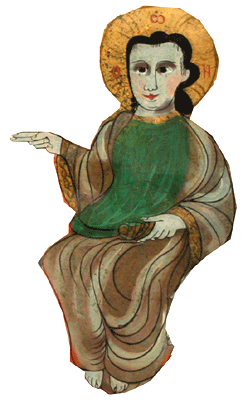
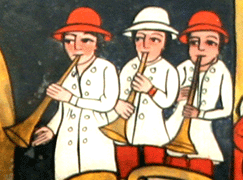
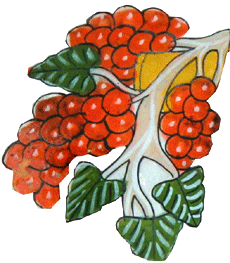
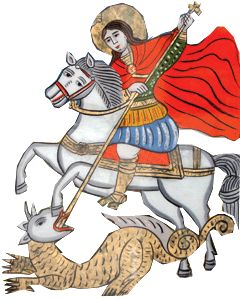
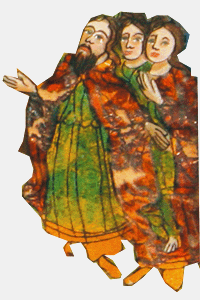
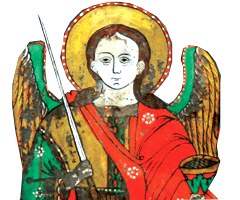
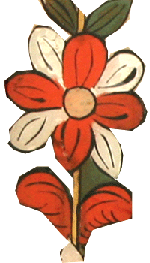
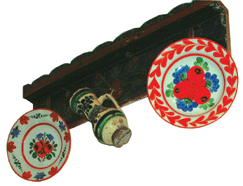
|
